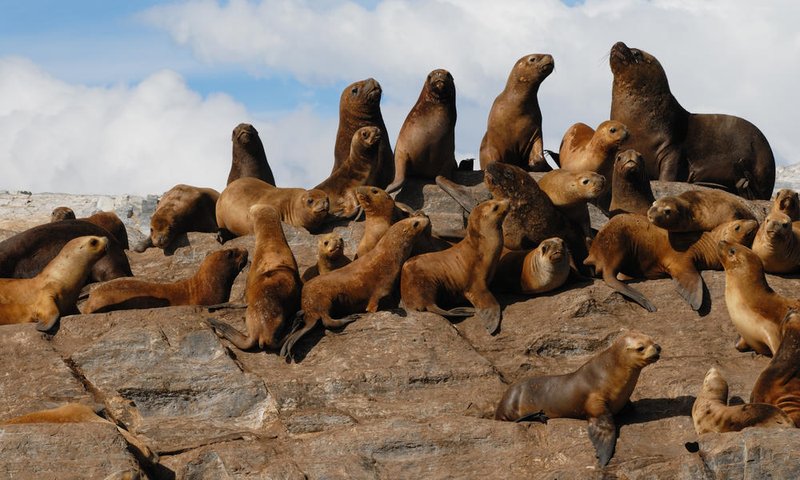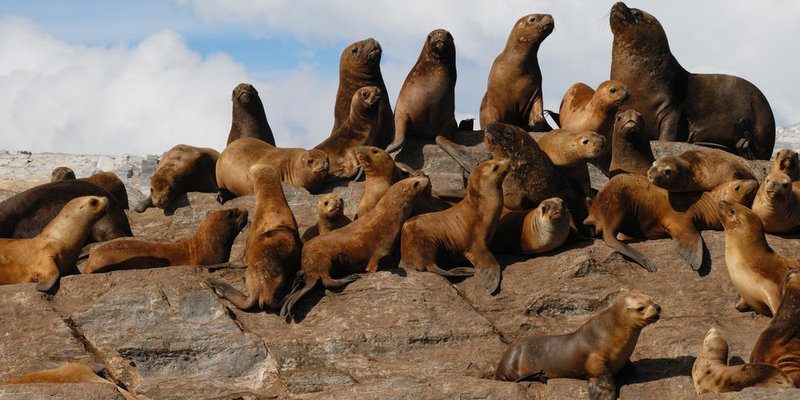
Imagine being surrounded by beauty and danger at the same time. That’s the reality for sea lions. They have to navigate not only the challenges of finding food but also threats posed by humans and nature. So, what do these threats look like? Let’s dive into the murky waters of their challenges and explore what’s really at stake for our flippered friends.
1. Climate Change and Its Impact
Climate change is a big deal for sea lions. Think of it like an unwelcome guest crashing a cozy dinner. The oceans are warming up, and that’s altering the habitats where sea lions find food. Warmer waters can lead to fewer fish and other prey available for them to eat.
As sea lions search for food, they may have to swim farther and dive deeper than ever before. This not only increases their energy expenditure but also exposes them to more dangers, like predators and harsh conditions. And let’s face it, when food gets scarce, it can lead to competition among sea lions, making life even tougher.
On top of that, melting ice caps can have a ripple effect on their breeding grounds. Sea lions often give birth on rocky beaches, but if these locations get disrupted by rising sea levels or increased storm activity, it can lead to decreased reproductive success. So, climate change isn’t just a buzzword; it’s a serious threat to their existence.
2. Pollution: A Silent Killer
Pollution is another significant threat to sea lions. Picture the ocean as a beautiful blue blanket, but with garbage and chemicals hidden beneath its surface. This pollution can come from various sources, including industrial waste, plastics, and oil spills.
When sea lions swim through polluted waters, they can ingest harmful substances or become entangled in fishing gear. For instance, plastic debris can look like food, and when sea lions munch on it, it can cause serious health problems, such as blockages or malnutrition.
Moreover, chemicals in the water can accumulate in their bodies, leading to long-term health issues, including weakened immune systems and reproductive failures. It’s heartbreaking to think that something as simple as litter can have such devastating effects on these creatures.
3. Overfishing: The Battle for Food
Overfishing happens when humans catch fish faster than they can reproduce. Imagine going to your favorite restaurant, only to find all your favorite dishes have been taken off the menu. That’s what it feels like for sea lions when overfishing takes away their food sources.
As fish populations decline due to overfishing, sea lions have to venture farther from their safe haunts to find something to eat. This not only saps their energy but increases their vulnerability to predators, like orcas. It’s tough out there when the ocean’s buffet is running low.
Not to mention, overfishing can disrupt the entire marine ecosystem. When one species is overhunted, it creates an imbalance that affects everything from the smallest plankton to the big sea lions hunting for their meals. It’s a chain reaction that can ripple through the waters for years.
4. Entanglement and Bycatch
Entanglement is another danger lurking in the depths. Imagine being caught in a web that you didn’t even see coming. Sea lions can become entangled in fishing nets, lines, and traps. This can lead to injuries or even drownings if they’re unable to free themselves.
Bycatch is another term to be aware of. It refers to the unintended catch of species while fishing for a target species. When commercial fisheries accidentally catch sea lions, it can lead to serious consequences for their populations. Not only do these accidental catches harm individual animals, but they also contribute to overall population declines.
There’s a significant push for better fishing practices to minimize these risks. Sustainable fishing is key here, as it allows for the protection of sea lions and other marine life while still supporting our food supply.
5. Habitat Loss: The Changing Shoreline
Habitat loss is like an eviction notice for sea lions. As coastal development increases, their natural habitats are shrinking. Beaches are transformed into hotels and marinas, leaving less space for sea lions to rest and breed.
Moreover, human activities near coastlines, such as the construction of docks and piers, can disrupt the areas where sea lions haul out. It’s crucial for them to have safe spaces on land to recover and nurture their young, so losing these spots can really impact their population.
The destruction of natural habitats doesn’t just affect sea lions; it also disrupts the entire ecosystem. Healthy coastlines support diverse wildlife, and when one part of that system suffers, the effects can be seen across many species.
6. Disease and Health Challenges
Just like any other animal, sea lions are susceptible to diseases. Outbreaks can spread quickly among populations, often fueled by stress from their other challenges. When sea lions face threats like food scarcity or habitat loss, their immune systems can weaken, making them more vulnerable to illnesses.
For example, viral infections can decimate entire colonies, leading to significant population decreases. Furthermore, the stress of entanglement or competition for food can also weaken their health, making recovery from disease more difficult.
Monitoring the health of sea lion populations is crucial for conservation efforts. By understanding and addressing health challenges, we can help ensure healthy populations in the wild.
7. Human Interference: Disturbances and Interactions
Human activity often leads to disruptions that can be harmful to sea lions. Think of it this way: if you were trying to relax on a beach with loud music playing nearby, you’d probably feel pretty stressed, right? Sea lions experience a similar situation when people get too close.
Interactions with humans can lead to stress and behavioral changes, further impacting their health and well-being. Disturbances from boats, noise pollution, or even recreational activities can frighten sea lions and force them to leave their resting spots.
We’re not just talking about a one-time disruption; continuous human disturbances can lead to long-term problems. As we enjoy our time in nature, it’s important to respect wildlife boundaries and minimize our impact on their habitats.
8. Conservation Efforts: A Path Forward
Now that we’ve unpacked the many threats to sea lions, you might be wondering how we can help them thrive. Conservation efforts are crucial to protecting these charismatic creatures. Organizations around the globe are working hard to address the challenges sea lions face.
These efforts can include establishing protected marine areas where sea lions can live without the threat of fishing or pollution. Educating the public about the importance of these creatures and sustainable practices can also make a huge difference.
You can contribute to their conservation by supporting responsible fishing, reducing plastic use, and advocating for clean waterways. Every small action counts!
In conclusion, sea lions are truly remarkable animals facing numerous threats in the wild. From climate change to human interference, their lives are filled with challenges. But with continued awareness and concerted conservation efforts, we can help secure a brighter future for these playful pinnipeds. Remember, we share this planet—let’s do our part to keep it safe for all its inhabitants.

